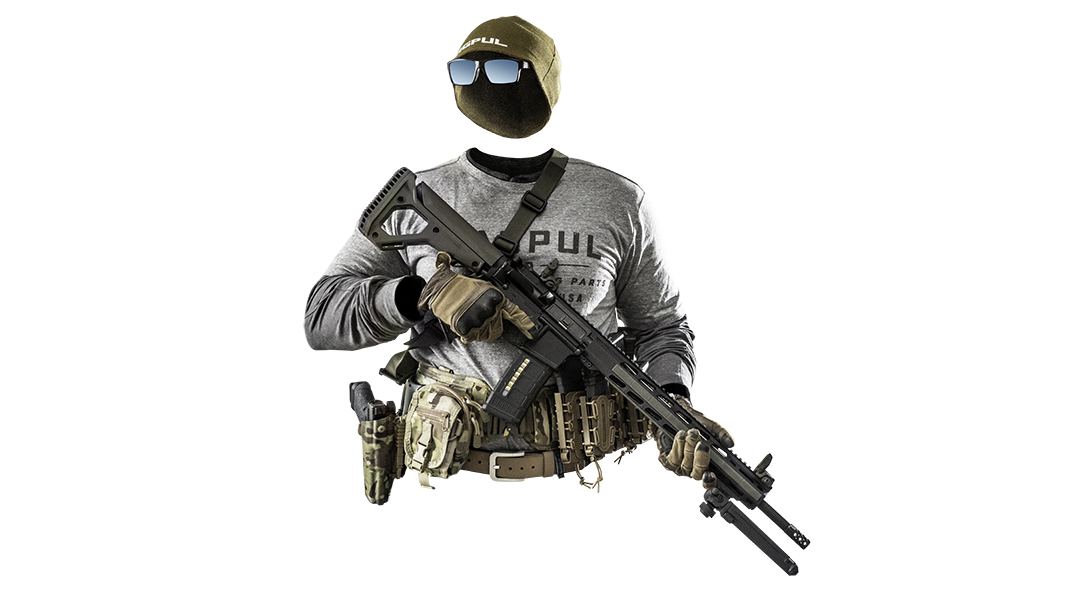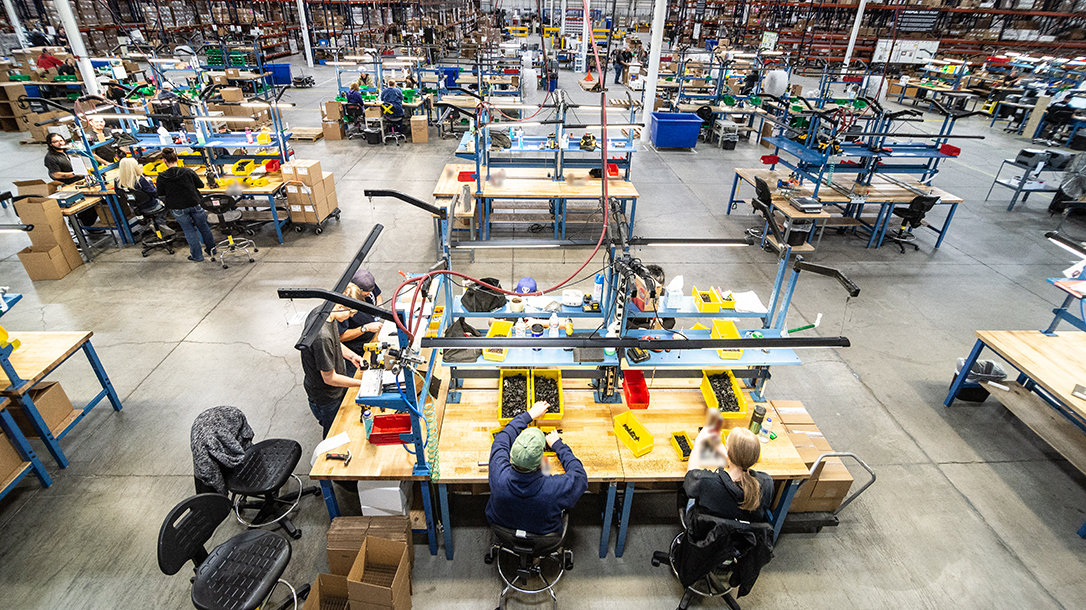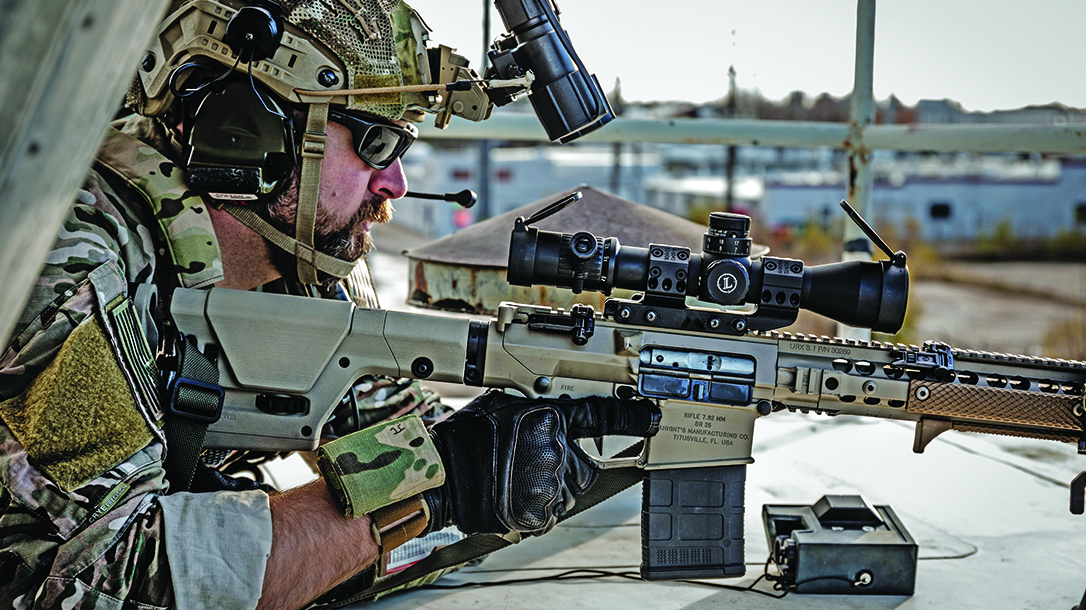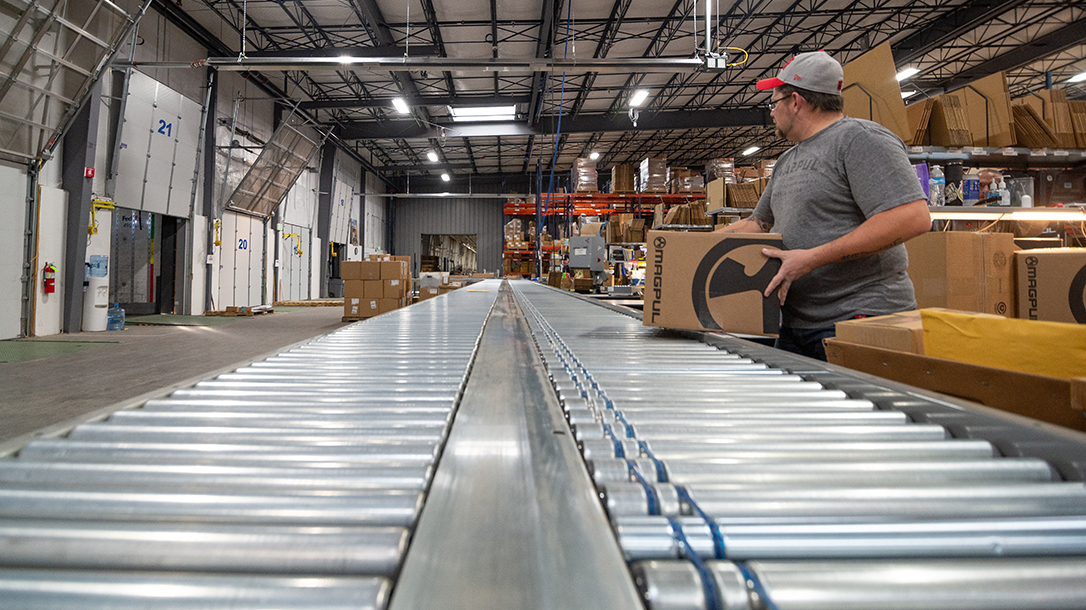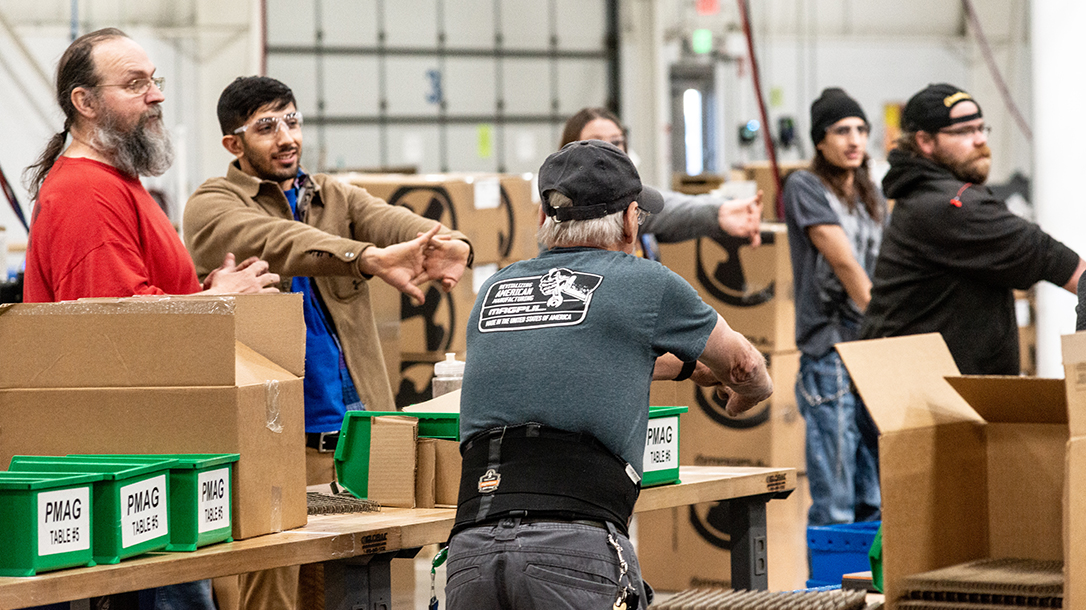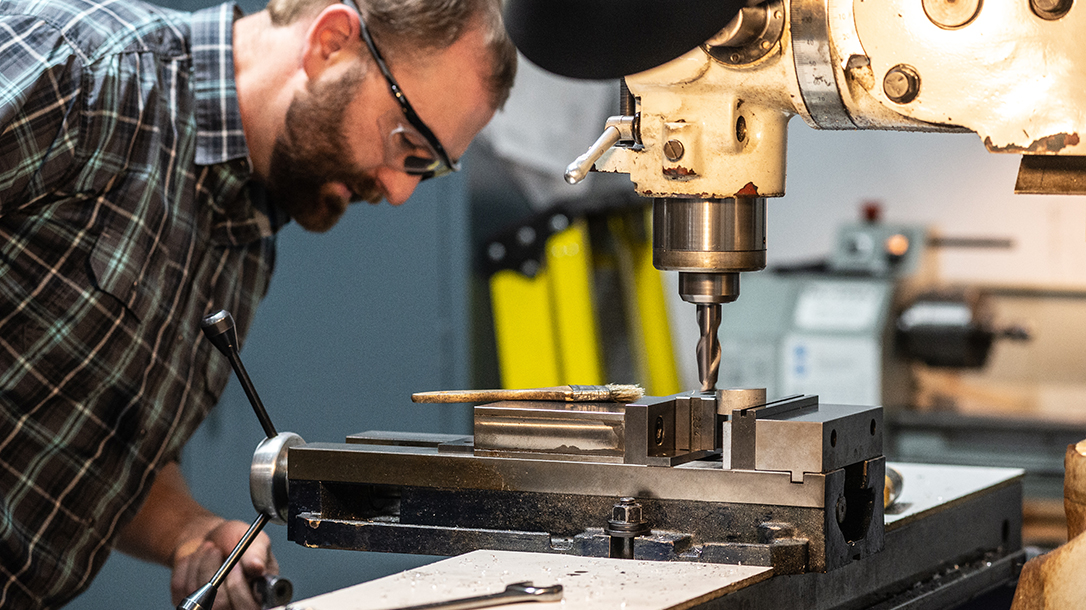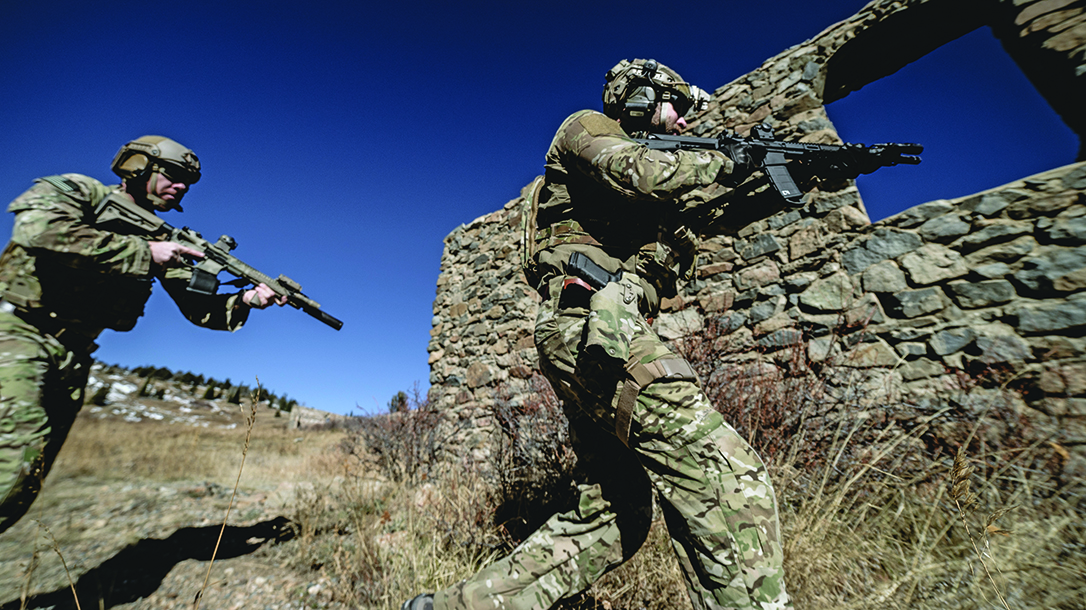As Magpul enters its 20th year, we worked to put the essence of the company into words. It’s obviously known worldwide for a little calling card known as the Magpul PMAG. You might be familiar with it. Magpul has achieved rockstar status and, more profoundly, maintained that status year after year in an industry full of ups and downs. What is very interesting, though, is that Magpul has quietly marched along with no attempt to make any one person or thing the face of Magpul. It wasn’t until we got to visit with Magpul Executive Vice President Duane Liptak that it all became clear. Duane said it perfectly: “Magpul is not any one product or person. It’s an attitude toward solving problems.”
Fitzpatrick Foundations
The story of Magpul is as American as apple pie. The founder of Magpul, Richard Fitzpatrick, served with the U.S. Marine Corps 3rd Recon Battalion. During his time there, he began to work on modifying what was originally a field-expedient method of retrieving rifle mags from their pouches. While it was common for soldiers to tape paracord to the bottom of their mags, he knew there had to be a better way. He began to tinker with ideas, but nothing seemed to really fit what he was looking for. This continued even after he left the Marine Corps. Then, in 1997, he came up with the idea of using a friction-style band secured around the magazine. He polished the design in the garage of his Colorado home and moved forward by patenting his idea. He then decided it was time to lay all his cards on the table.
Advertisement — Continue Reading Below
Fitzpatrick grabbed his savings and ordered a small injection mold with the intent of manufacturing the devices himself. With a sigh of relief, the mold worked perfectly. Then came the name—Magpul—short for “Magazine Pull.”
The company continued to grow, working out of his Colorado home until demand had forced the company to move into a dedicated facility. Since then, Magpul has grown into a company that manufactures a wide array of accessories, including magazines, stocks, sights, handguards, slings, mounts, cases, eyewear, belts and even clothing. Then there’s the Magpul Core training division, with its expert staff, and Magpul has even taken to the racing circuits, as it has sponsored vehicles ranging from a Unimog dubbed “Bam Bam” to a high-speed Baja 1000 trophy Jeep.
Mission Driven
While the PMAG is a cornerstone of its offerings, Magpul is not defined by any one product. As Duane Liptak mentioned, Magpul is an attitude toward solving problems. And the company focuses on providing solutions that are intuitive and elegantly simple, easy for shooters to appreciate.
Advertisement — Continue Reading Below
According to the company, “It is almost always easier to design a product that is complicated, confusing and expensive rather than simple, intuitive and affordable. Although it is more difficult, Magpul has chosen to take the latter of these two approaches to product development.” Once the designs move to the prototype phase, they face exhaustive testing in what has been called Magpul’s “Willy Wonka” collection of testing apparatuses and range evolutions. Only after they survive this will they see the light of day and go on to consumers.
From the very beginning of any project, Magpul uses a specific list of mission-driven requirements to steer everything from construction materials to manufacturing methods. The focus is producing a product in the most efficient fashion without sacrificing quality or performance. Magpul expresses the rest of this well: “By incorporating ergonomic considerations, a proper user interface, and subtle visual and tactile features, the product itself should actually instruct the user about its operation and function.”
This is something that rang true with me early on when I picked up the first Magpuls. Like many serious shooters, I’m sure I still have some of the original Magpuls on metal GI mags in my locker. Everything Magpul makes has a feel of bomb-proof simplicity. The PMAGs are a perfect example of this. But this simplicity is deceptive, as each product has gone through hours upon hours or research and development.
Advertisement — Continue Reading Below
The Case of the PMAG
Magazines are the culprit in many rifle issues, and PMAGs solve that. The challenge was getting people to understand that. Drake Clark, Magpul’s senior director of sales and business development, told me, “The most obvious challenge was that previously produced polymer magazines from other manufacturers had not seen any legitimate success, and they weren’t taken seriously in the market. This was due to a number of factors, such as reliability, durability, availability and consistency in manufacture. At this point, the market had determined that aluminum USGI mags were ‘good enough’ as the standard. Convincing the masses that Magpul had built a better mousetrap was a challenge.”
Magpul’s internal test data proved that the PMAG was superior, and that eventually got the attention of military and law enforcement personnel. As they say, the rest is history. Nowadays, you’d be hard pressed to find a police agency that is not running PMAGs or other Magpul accessories. And while they are late to the dance, the U.S. military has begun adopting these long-proven items. To some, this will seem like a logical step, yet military procurement is a mix of data presentation, demonstration and 16th century magical incantations. Sometimes it makes no sense.
Advertisement — Continue Reading Below
Military Adoption
However, in what Duane Liptak called a “triumph of data and a decision to do what’s right for the service,” the Marine Corps adopted the PMAG in 2017. According to Marine Corps Systems Command, “The Magpul GEN M3 PMAG was the only magazine to perform to acceptable levels across all combinations of Marine Corps 5.56mm rifles and ammunition during testing. That magazine has therefore been approved for use for both training and combat.”
The Army, on the other hand, was still dogmatically clinging to its in-house-designed Enhanced Performance Magazines, or EPMs. It would take Freedom of Information Act requests, countless people essentially saying, “What the hell?” and a series of Aberdeen tests showing the GEN M3 PMAG averaged over 30,000 rounds between magazine-related stoppages before the big green machine finally came to its senses and officially allowed the procurement of GEN M3 PMAGs.
Drake Clark shared that the Marine Corps adoption was a very big deal. “We were all proud—engineers, designers, customer service, sales, all of us. We had worked for 10 years, going through three different revisions, to get to the GEN M3 variant of the PMAG. Knowing the USMC had the best product available for the job, and that Magpul navigated the rough road to prove it, will be etched in my memory for many years to come.” This was a major victory for both Magpul and the military it is committed to serving.
Advertisement — Continue Reading Below
2A Role Models
Magpul is admired in the industry beyond its commitment to manufacturing excellence. While many companies obviously support the Second Amendment, few have put their money where their mouth is on the subject. In 2013, Magpul launched the “Boulder Airlift” as a response to a new Colorado law banning “high-capacity” magazines. The program essentially gave Colorado residents priority in ordering 20- and 30-round magazines before the law went into effect. As Magpul put it, “The Airlift will bring much-needed gun supplies to freedom-loving residents trapped inside occupied territory.”
Magpul eventually responded to the anti-gun rhetoric by saying it would be forced to leave Colorado if the state banned some of its products. When the bills passed, Magpul made good on its promise and moved its manufacturing operations to Cheyenne, Wyoming, and corporate headquarters to Austin, Texas. Fitzpatrick, the founder of Magpul, stated, “The magnitude of what was being proposed forced us into the political arena almost immediately. We had an economic defense that could be mounted against the bill, whereas the arguments that should have held more weight—those of liberty—were being ignored by those in power.
“That said, the decision to uproot and leave Colorado was not made lightly. There were a lot of conversations internally about this, and a lot of sleepless nights, but in the end, we all agreed that holding true to our principles was the only thing that felt right, whatever the outcome or threat to the business.”
Advertisement — Continue Reading Below
Behind the Scenes
Ballistic had the pleasure of visiting Magpul’s manufacturing facility in Cheyenne for a look behind the curtain. The large 185,000-square-foot shop is easy to spot on the gently rolling plains. I personally think the facility would be world-class in any industry, not just the firearms world. It’s well laid out, spotless and filled with cutting-edge equipment that helps keep things moving smoothly.
We had the opportunity to talk with Carey Ryerson, vice president of manufacturing operations. It was obvious that he was genuinely proud of the facility and the team that staffed it. The state of Wyoming welcomed Magpul with open arms, and Ryerson has worked hard to support the local community. The approximately 200 employees at the location are dedicated—a true reflection of the Wyoming character. As you walk the floor, the enthusiasm and team mentality are palatable.
American Made
Ryerson explained that every Magpul employee understands that their products could save lives. Another major point of pride is the fact that Magpul accessories are 100-percent American made. This goes all the way down to the screws that hold things together. I mention these because Fastenal fasteners works with Magpul and keeps its own shop inside the facility for better collaboration. This ensures Magpul only uses American fasteners.
Advertisement — Continue Reading Below
When I asked Ryerson what it is that really makes Magpul stand out in the industry, he said it was the people. “While the team are all ‘gun people,’ they are first and foremost subject-matter experts in their disciplines.”
When I asked Mike Mayberry, vice president of product development, about Magpul’s design identity, he said, “We have always focused on delivering the right combination of performance, price and design appeal. The ideal balance of these elements is critical, and it’s not as easy to achieve as one might think. It’s not uncommon to look at a successful design and think ‘Well, yeah, of course it’s like that.’ It’s easy to say this when the solution is in front of you, but much more difficult to create when you are starting with nothing.”
I also asked him what a typical day was like at Magpul, and he lightheartedly said, “What’s a typical day like working with the design team? Heaven and Hell, with lunch in the middle.”
Advertisement — Continue Reading Below
The Next 20
Magpul is as driven at 20 years old as it was the day it began. It has continued to grow and develop using much the same mission and process with a focus on innovation, simplicity and efficiency. All of the team members I spoke with have a clarity of purpose that has stuck with them for decades now. “People who use Magpul products have high expectations and a great deal of trust regarding the quality and amount of thought put into every design we release,” said Mike Mayberry. For Magpul, the future is bright.
Several years ago, Magpul developed a complete firearm called the Masada (which eventually evolved into the Bushmaster ACR), and curiosity about something new coming from Magpul in that vein always pops up. Mike Mayberry shared, “We’ve toyed with the idea of a Gen2 gun, but then we’ve toyed with 1,000 other ideas as well. Dreaming something up is one thing but bringing it to market is a very different proposition. We treat that very seriously. There are some great ideas that never see production because the business model isn’t there to support it, and then there are the ones that do. With the Masada, Bushmaster/Remington saw the potential and brought that concept to market. There is always the possibility of that happening again.”
I have no doubt that should something come down the pipeline, it will be worth the wait. In the end, it is Magpul’s commitment to its fundamental beliefs that has kept it at the top and will do so for decades to come.
For more information, please visit Magpul’s website.
